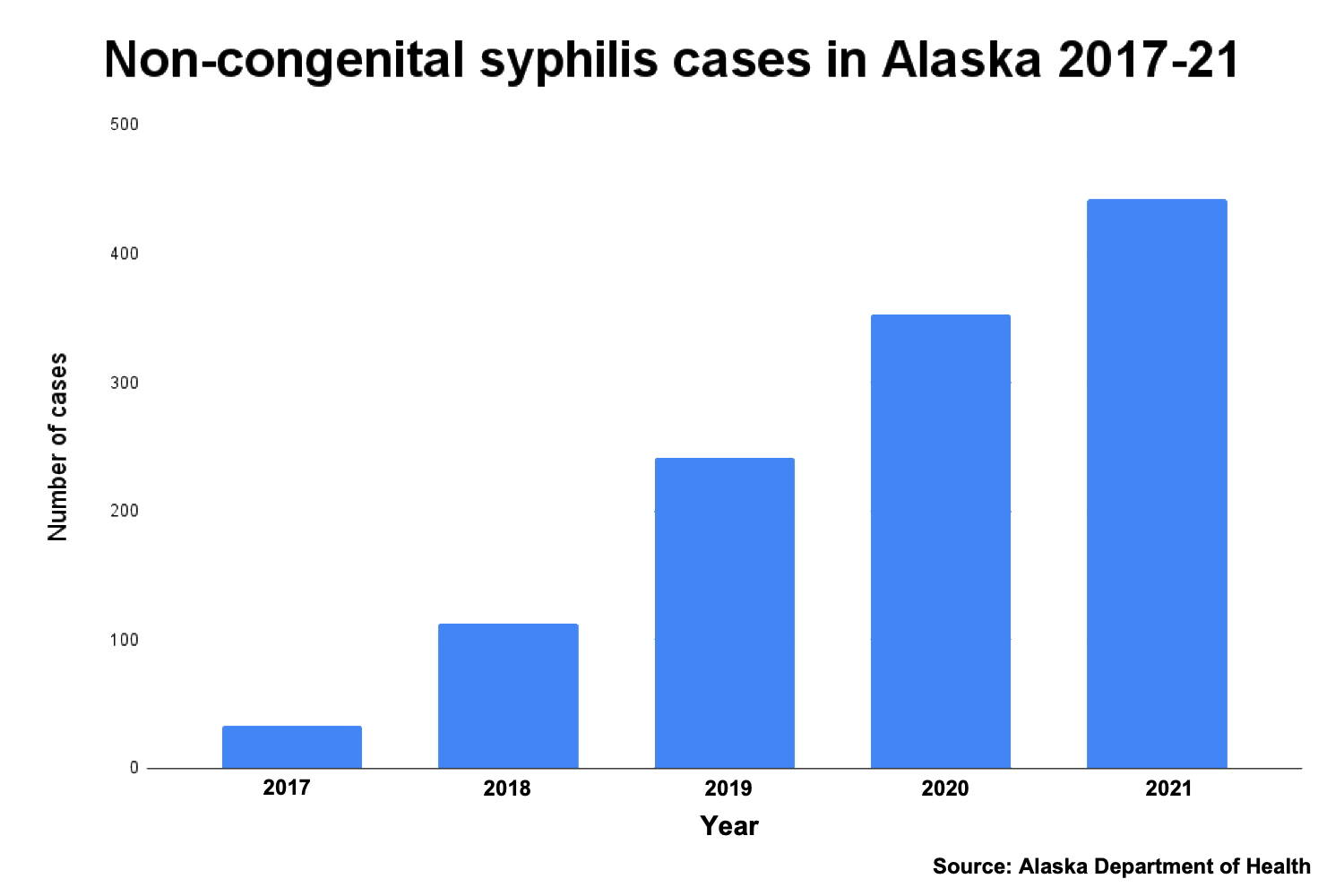Syphilis cases in Alaska increase about 1,340% between 2017 and 2021, reflecting an enormous rise nationwide made worse by the state’s relatively young population and difficulty of accessing health care for many residents, according to an annual bulletin released this week by the Alaska Department of Health.
The number of reported cases rose from 33 in 2017 to 442 in 2021, with large increases occurring during each of the intervening years. Alaska had the third-highest rate of syphilis infections in 2020, the most recent year state-by-state comparisons are available, and also the third-highest rate of chlamydia and the eighth-highest rate of gonorrhea.
“If you’re at risk for one you’re at risk for all,” said Kamala Stiner, HIV/STD program manager for the state’s health department, in an interview Thursday.
Southeast Alaska saw similar increases in syphilis, rising from a single case in 2015 to two in 2016 to 14 in 2021. The region’s 2021 population of 72,494 that represents roughly one-tenth of the state’s population of 734,323, according to the Alaska Department of Labor and Workforce Development, which suggests a lower infection rate per 100,000 people, the standard of comparison used by health agencies.
Alaska’s median age of 34.6 as of 2021 is a major factor for the relatively high infection rates since “when you have younger folks it does equate to more sexual activity,” Stiner said. The accessibility of health care, even in urban areas, is also largely responsible.
“We struggle with access, with transportation, even in Anchorage where most if this is happening, is related to transportation, availability of clinics, and low-cost or no-cost treatment,” she said.
State health officials, as with others nationwide, have been aware of and offered similarly bleak assessments during the past few years along with recommendations to address the problem. But while Stiner said “we have definitely done a lot” in attempting remedies, a large part of the ongoing problem is convincing people to overcome their stigmas about testing.
“We cannot force people to be treated or tested,” she said. “That is a good portion of the issue.
“There should be no shame. They should be getting testing, getting treatment and moving on with their lives.”
The bulletin breaks down cases by categories including age, gender, sexual preference and ethnicity. In the latter category high rates were reported among Alaska Native people with about 16% of the population and 42% of cases, Black people with 3.6% of the population and 13% of cases, and multi-racial residents with 8% of the population and 12% of cases. Lower rates were reported among Caucasian people with 65% of the population and 25% of cases, and Asian people with 6.5% of the population and 2% of cases.
But homelessness, drug use and other factors also show notable patterns, according to the bulletin.
“Most occurred in people who self-identify as heterosexual and those living in urban environments (29% of whom were experiencing homelessness or unstably housed),” it states. “Also notable is that roughly half of the 2021 cases were in women, and nearly 90% of them were of reproductive age (5 cases of congenital syphilis were reported in 2021). Racial/ethnic disparities persist in this epidemic. Lastly, co-infection with other STIs and heroin/methamphetamine use are commonly identified co-factors.”
Five of the cases were babies born to infected mothers, an especially risky situation since the disease can be fatal to infants.
The 15 recommendations in the 2021 bulletin include screening pregnant patients during their first prenatal visit, periodic comprehensive screening of patients in high-risk categories and pregnancy tests for people of reproductive age who are infected with syphilis.
• Contact Mark Sabbatini at mark.sabbatini@juneauempire.com

